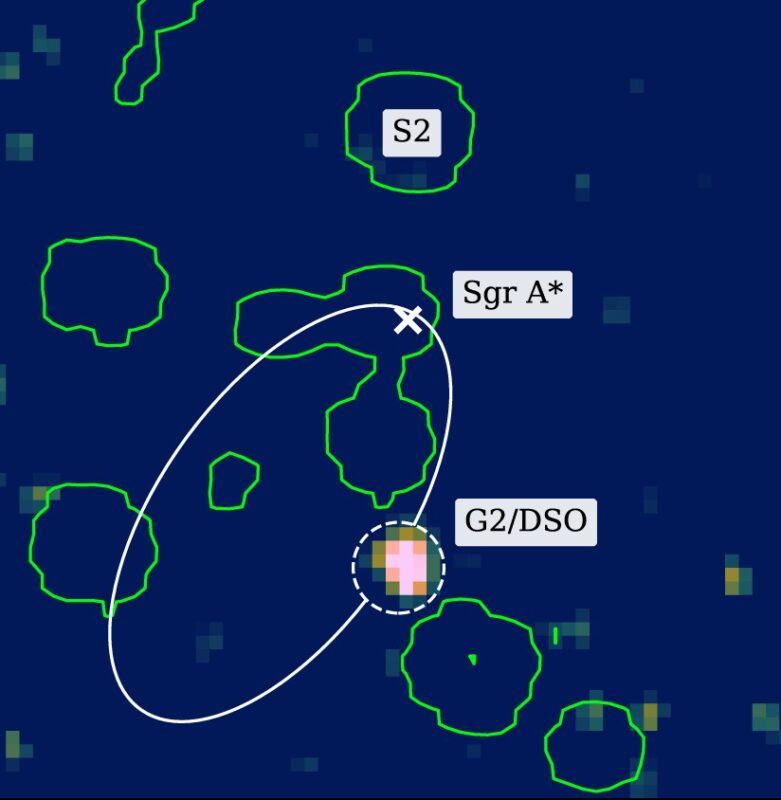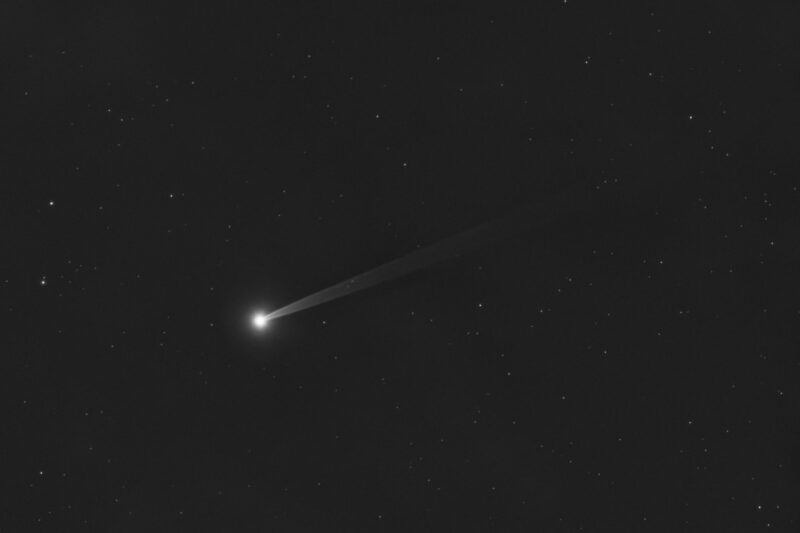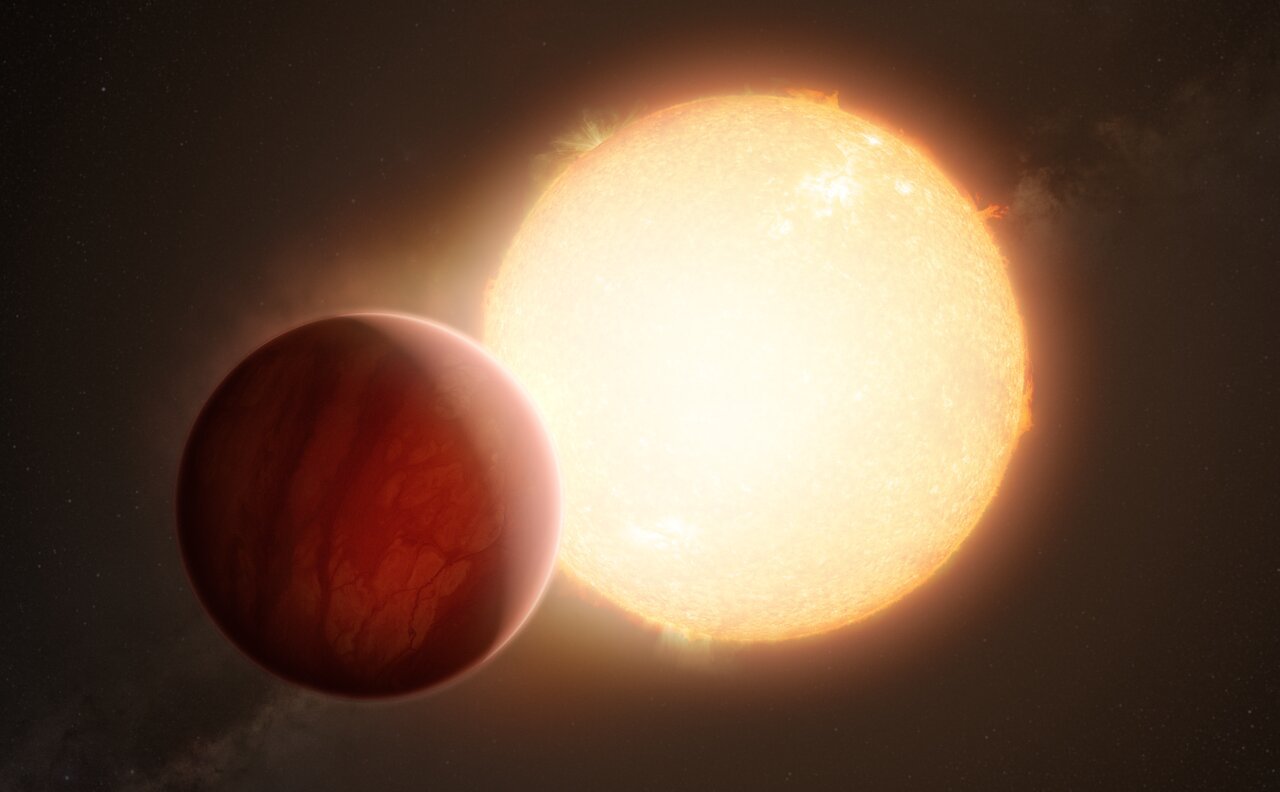Now Reading: Companion for Betelgeuse confirmed! Beloved red star has a blue-white buddy
-
01
Companion for Betelgeuse confirmed! Beloved red star has a blue-white buddy
Companion for Betelgeuse confirmed! Beloved red star has a blue-white buddy
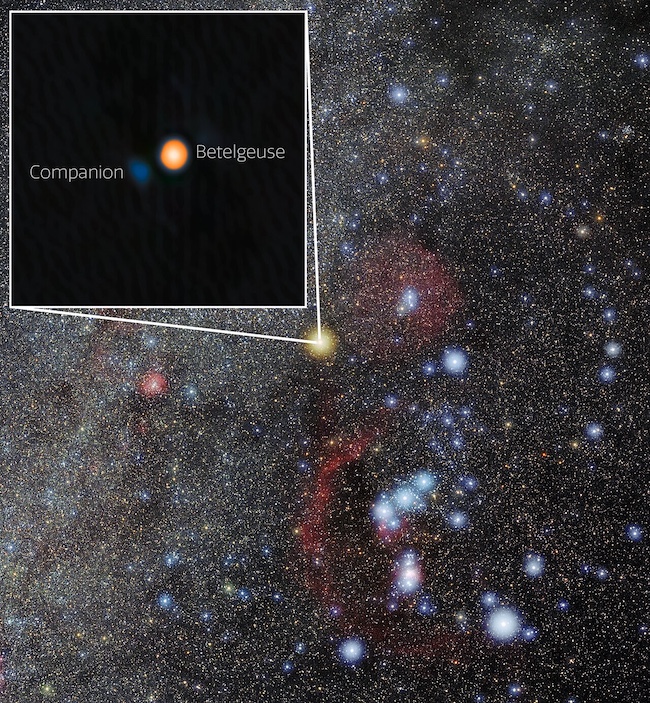
Astronomers announced this morning (July 21, 2025) that they’ve discovered a companion star in a tight orbit around the beloved red supergiant star Betelgeuse, in the constellation Orion. How did they find it? And what will happen to this companion star when – as predicted – Betelgeuse someday explodes? Astrophysicist Steven Howell led the team that discovered the companion. He joins EarthSky’s Deborah Byrd on today’s livestream, to give us the scoop. The video drops at 12:15 p.m. CDT (17:15 UTC) on Monday, July 21.
- Betelgeuse is a famous red supergiant star, located some 650-700 light-years from Earth. Its fame stems in part from the fact it’ll someday explode and become visibly brighter in our sky! Astronomers have long thought Betelgeuse might have a smaller, fainter companion star.
- Betelgeuse does indeed have a buddy, astronomers have now confirmed using the Gemini North telescope in Hawaii. The companion star is blue-white and orbits within Betelgeuse’s outer atmosphere.
- Both stars likely formed at the same time, only about 10 million years ago. The fate of the companion isn’t entirely known, but it may eventually be consumed by Betelgeuse.
A companion for Betelgeuse
It’s confirmed! The beloved red supergiant star Betelgeuse has a companion! Astronomers using the ‘Alopeke instrument on the Gemini North telescope in Hawaii found the companion star. The researchers said on July 21, 2025 that the companion has an estimated mass of around 1.5 times that of our sun. It appears to be an A- or B-type pre-main-sequence star — a hot, young, blue-white star that has not yet initiated hydrogen burning in its core.
The companion is 6 magnitudes fainter than Betelgeuse and orbits close to Betelgeuse itself, within the supergiant star’s extended outer atmosphere.
The Betelgeuse binary system
So … wow! What an incredible example of stellar evolution in action. Both Betelgeuse and its companion are relatively young stars, only about 10 million years old. Both are massive stars, of the sort that burn their fuel quickly. In accordance with what astronomers have learned about how stars evolve, Betelgeuse started out more massive than its companion. It probably started with about 15 to 20 times the sun’s mass. Betelgeuse has already spent the hydrogen fuel in its core and evolved to the red giant stage. It’ll famously explode as a supernova someday soon, anytime between now and 10,000 years from now.
The companion – at only 1.5 times the sun’s mass – appears to be still forming. It’s not massive enough to become a supernova itself someday, but, in any case, its life will be cut short by Betelgeuse. And it might eventually spiral into Betelgeuse.
Several astronomers in recent decades have suggested a companion for Betelgeuse. And a previous study from last year strongly suggested it. But now, the new observations have confirmed it.
The researchers published their peer-reviewed findings in The Astrophysical Journal Letters on July 21, 2025.
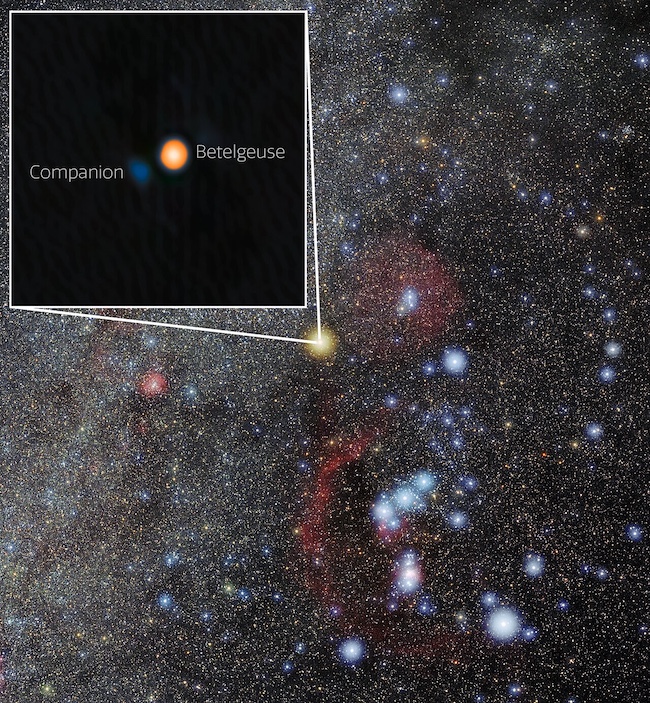
Higher-resolution images reveal Betelgeuse’s buddy
Astrophysicist Steve Howell at NASA Ames Research Center in California led the team that made the discovery. The researchers used a speckle imager on Gemini North called ‘Alopeke (‘fox’ in Hawaiian). Speckle imaging uses very short exposure times to freeze out the distortions in astronomical images caused by Earth’s atmosphere. The astronomers combined it with the power of Gemini North’s 8.1-meter mirror to produce higher-resolution images.
The researchers analyzed the light of the fainter companion star to determine its characteristics. It is an A- or B-type pre-main-sequence star: young, hot and blue-white in color, in contrast to Betelegeuse’s fiery red. In addition, it is also much smaller and less massive than Betelgeuse, only 1.5 times as massive as our sun. Betelgeuse itself is enormous, about 1,400 times larger in size than the sun.
Optically, the companion star is 6 magnitudes fainter than Betelgeuse.
The researchers say that both stars likely formed at the same time. The companion, however, will probably have a sorter lifetime. It will eventually be consumed by Betelgeuse after it spirals into the red supergiant.
An impressive accomplishment
The detection of the companion star is an impressive achievement, to be sure. Howell said:
Gemini North’s ability to obtain high angular resolutions and sharp contrasts allowed the companion of Betelgeuse to be directly detected. Papers that predicted Betelgeuse’s companion believed that no one would likely ever be able to image it.
This detection was at the very extremes of what can be accomplished with Gemini in terms of high-angular resolution imaging, and it worked. This now opens the door for other observational pursuits of a similar nature.
Martin Still, the National Science Foundation program director for the International Gemini Observatory, added:
The speckle capabilities provided by the International Gemini Observatory continue to be a spectacular tool, open to all astronomers for a wide range of astronomy applications. Delivering the solution to the Betelgeuse problem that has stood for hundreds of years will stand as an evocative highlight achievement.
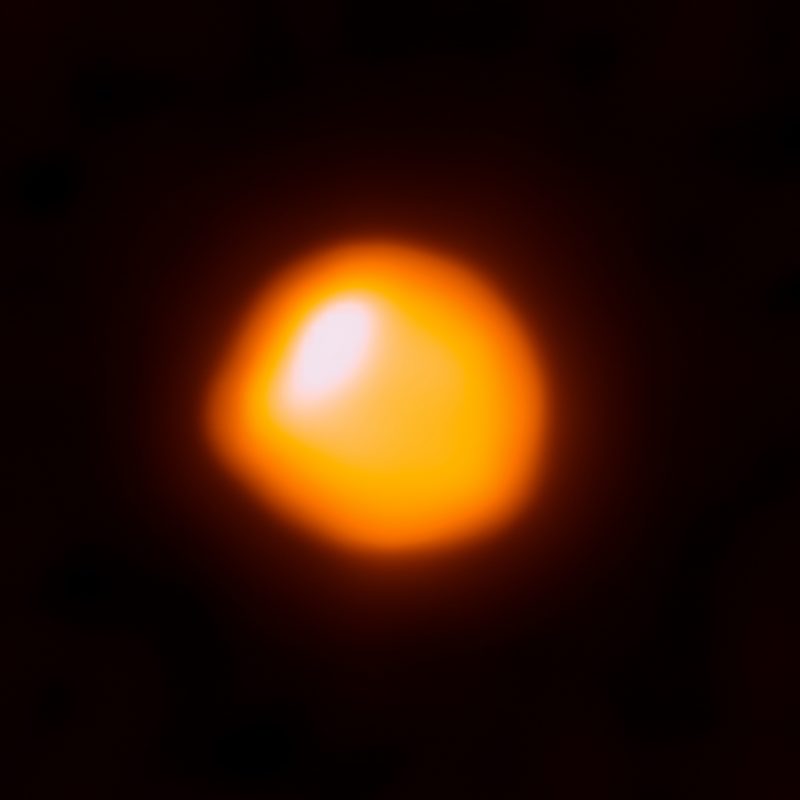

The Great Dimming of Betelgeuse
Betelgeuse is a variable star, but also experiences periods of even more significant dimming in brightness. It most recently did so in 2019-2020 and again in 2024. In fact, these dimming episodes sparked speculation that Betelgeuse might explode soon (and astronomers say that indeed it will do so one day).
In 2021, scientists said that Betelgeuse was expelling massive amounts of hot gas and dust from its atmosphere. This, consequently, caused the dimming, as the dust temporarily blocked some of the star’s light.
Interestingly, the previous study from 2024 also suggested that if Betelgeuse did have a companion, then it probably won’t go boom anytime soon. So we might be waiting a long time yet!
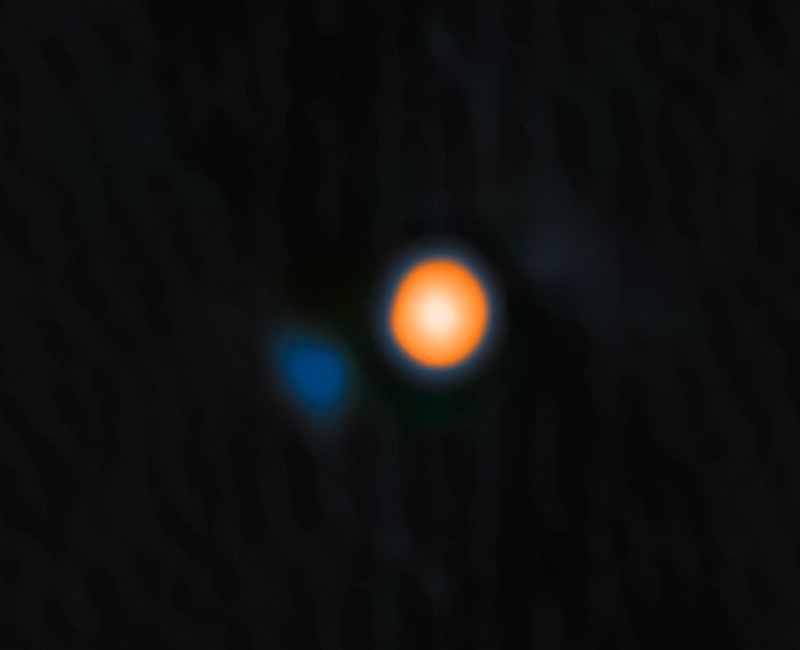
Bottom line: Astronomers using the Gemini North telescope in Hawaii have confirmed a companion for Betelgeuse! The companion star is blue-white and orbits within Betelgeuse’s outer atmosphere.
Source: Probable Direct Imaging Discovery of the Stellar Companion to Betelgeuse
Read more: Betelgeuse will explode someday, but WHEN?
Read more: How far is Betelgeuse, the famous red supergiant star?
The post Companion for Betelgeuse confirmed! Beloved red star has a blue-white buddy first appeared on EarthSky.
Stay Informed With the Latest & Most Important News
Previous Post
Next Post
Previous Post
Next Post
-
 012024 in Review: Highlights from NASA in Silicon Valley
012024 in Review: Highlights from NASA in Silicon Valley -
 02Panasonic Leica Summilux DG 15mm f/1.7 ASPH review
02Panasonic Leica Summilux DG 15mm f/1.7 ASPH review -
 03How New NASA, India Earth Satellite NISAR Will See Earth
03How New NASA, India Earth Satellite NISAR Will See Earth -
 04And Thus Begins A New Year For Life On Earth
04And Thus Begins A New Year For Life On Earth -
 05Astronomy Activation Ambassadors: A New Era
05Astronomy Activation Ambassadors: A New Era -
06SpaceX launch surge helps set new global launch record in 2024
-
 07From Polymerization-Enabled Folding and Assembly to Chemical Evolution: Key Processes for Emergence of Functional Polymers in the Origin of Life
07From Polymerization-Enabled Folding and Assembly to Chemical Evolution: Key Processes for Emergence of Functional Polymers in the Origin of Life













